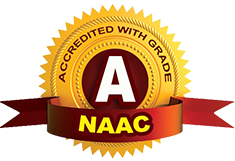Training & Placement Officer & Co-ordinator
| Sr. No. | Name of Members | Department | Designation | Contact No. | Email-ID |
|---|---|---|---|---|---|
| 1. | Prof. P. P. Kulkarni | SIEM | Training & Placement Officer | 7798821535 | prasad.kulkarni@siem.org.in |
| 2 | Prof P. P. Vispute | Civil Engg. | Co-Ordinator | 9420600601 | pavan.vispute@siem.org.in |
| 3 | Prof A. K. Mishra | E & TC Engg | Co-Ordinator | 8975590171 | amit.mishra@siem.org.in |
| 4 | Prof C. R. Shinde | Electrical Engg. | Co-Ordinator | 9970031353 | chandrakant.shinde@siem.org.in |
| 5 | Prof V. V. Mahale | Computer Engg. | Co-Ordinator | 9970031353 | vishal.mahale@siem.org.in |
| 6 | Prof K. P. Joshi | Mechanical Engg. | Co-Ordinator | 9421409790 | kaustubh.joshi@siem.org.in |
Training and placement are integral components of educational and professional development, particularly in the context of higher education and the job market. These activities are designed to bridge the gap between theoretical knowledge acquired in academic settings and practical application in real-world work environments.
Here is a brief description of training and placement:
Training:
- Purpose: Training is a process of equipping individuals with the necessary skills, knowledge, and competencies to excel in their chosen field of work. It aims to enhance practical abilities, problem-solving skills, and familiarity with industry-specific tools and technologies.
- Types: Training programs can vary widely based on the industry, job role, and specific objectives. They may include on-the-job training, classroom-based training, workshops, seminars, online courses, and more.
- Key Components: Training often includes hands-on exercises, case studies, simulations, and assessments to gauge the effectiveness of the training and the learner’s progress.
- Providers: Training can be conducted by educational institutions, employers, external training agencies, or through self-paced online courses.
Placement:
- Purpose: Placement, also known as campus placement or job placement, is the process through which students and job seekers are connected with potential employers. It facilitates the transition from education to employment by matching individuals with suitable job opportunities.
- Campus Placement: In the context of educational institutions, campus placement refers to the organized process where companies visit campuses to recruit students before they graduate.
- Job Placement Services: Beyond educational institutions, job placement services may be provided by career centers, recruitment agencies, and government organizations. They help job seekers find appropriate employment opportunities.
- Process: Placement processes often involve resume building, interview preparation, networking, and connecting candidates with job openings.
Importance:
- For Students/Job Seekers: Training and placement are crucial for students and job seekers to gain practical experience, secure job offers, and kickstart their careers. It helps them transition smoothly from academia to the workforce.
- For Employers: For employers, placement services streamline the hiring process by providing access to a pool of well-trained and potentially qualified candidates. It saves time and resources in recruitment.
- For Educational Institutions Successful placement records enhance the reputation of educational institutions and attract more students. It reflects the institution’s commitment to producing job-ready graduates.
Challenges and Trends
- The job market is dynamic, and the skills demanded by employers are constantly evolving. Therefore, continuous training and upskilling have become essential.
- Online platforms and e-learning have gained prominence, offering flexible and accessible training options.
- Companies are increasingly looking for soft skills like communication, adaptability, and problem-solving in addition to technical skills.
- The gig economy and remote work have influenced how training and placement are approached, with an emphasis on remote skill development and virtual job interviews.

